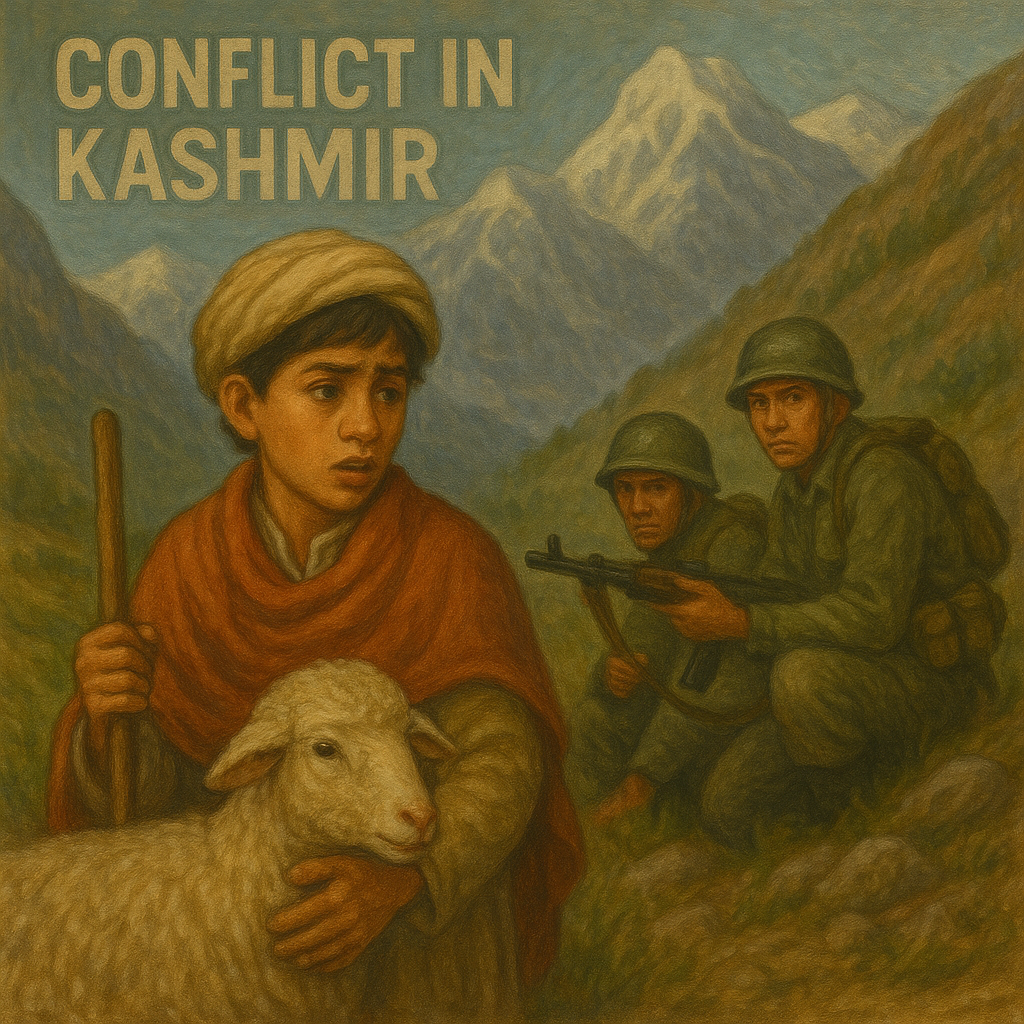Lesson 2: A New Asia (The Postwar World)
🕊️ Conflict in Kashmir
After India and Pakistan became independent from Britain in 1947, a beautiful mountain area called Kashmir became a big problem. Both countries said, "Kashmir belongs to us!" 😠
The people in Kashmir were mostly Muslim, like Pakistan, but the ruler was Hindu, like India. A war started. Since then, India and Pakistan have fought three wars over Kashmir. Even today, soldiers still watch the borders.
Story Time: One day, a shepherd boy found soldiers hiding in the mountains. His story helped stop a secret attack! Sometimes, even young people become part of history.
💰 Economic Success: Japan, China, and India
After World War II, much of Asia was poor and broken. But big changes came! 🌏
Japan – From Bombs to Business
In 1945, Japan lost the war. Its cities were destroyed. But the people worked hard. Factories were rebuilt. Schools improved. In 30 years, Japan became one of the richest countries in the world! 💼
Fun Fact: In 1964, Japan hosted the Olympics! Just 19 years after the war, it showed the world, “We are back!”
China – From Farms to Factories
In the 1980s, China started to change. Leaders like Deng Xiaoping said, “It’s okay to make money.” 🏭 People could now start businesses and work in factories.
Story Time: One farmer stopped waiting for government help. He and his friends secretly made a deal to farm their own way. Soon, they had extra food—and others followed!
India – Smart Minds and New Ideas
India kept its democracy and focused on learning. Many Indians became engineers and software experts. Today, India is famous for its IT workers and space programs! 🚀
Fun Fact: India sent a rocket to Mars for less money than it took to make some Hollywood movies! 🎥
🏛️ Political Shifts in Asia
🗳️ Democracy Grows
Many countries in Asia started choosing leaders by voting. India became the world’s biggest democracy. People from cities and villages all got a say.
Story Time: In one election, a 100-year-old woman walked for hours just to vote. She said, “It’s my right!” 💪
🏴☠️ Military Governments and Martial Law
Some countries, like Myanmar (Burma), had military leaders take control. They said, “We will keep order.” But they stopped free speech and arrested people.
China and Democracy: China’s leaders stayed strong. They didn’t allow free elections. In 1989, students in Tiananmen Square asked for freedom. But the army came with tanks. 🚫
Sad Moment: A brave man stood in front of a tank, alone. No one knows what happened to him. But the photo became famous around the world. 📸
🏮 Blending Old and New
Asia is full of history—but it also loves technology! People wear jeans and use smartphones 📱, but also visit temples and follow old traditions 🛕.
Story Time: In South Korea, young people play video games at night 🎮, but bow to elders in the morning. In India, a robot may help in a hospital—but the family still lights candles at the temple.
In Japan, old wooden houses sit next to high-speed trains. 🚄 It’s a mix that makes Asia special.
